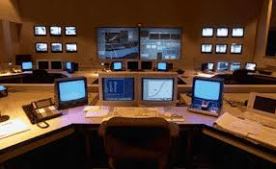|
Posted: 18 Jun 2013 06:41 AM PDT
It may not have been the feared storm that many predicted, and it certainly didn’t hold a candle to the previous storm that bore its “derecho” name, but last week’s thunderstorm was one of the many that are being predicted by the National Oceanic and Atmospheric Administration (NOAA) during the 2013 hurricane season. Washington, D.C. has seen its share of foul weather in the past few years. Snowpocalypse, last year’s derecho, numerous named tropical storms and other weather events have blazed paths of destruction through the area, closing the offices of government agencies and forcing federal employees to stay in their homes. These incidents resulted in the closure of government offices and the loss of millions of dollars worth of productivity as federal employees were unable to do their jobs. With the steep cost of closing government offices and a predicted severe hurricane season top of mind, the Office of Personnel Management (OPM) sent a memo to federal agency Chief Human Capital Officers (CHCOs) that stressed the flexibilities available to federal employees to help ensure continuity of operations (COOP) when disaster strikes. One of the many points raised by OPM in their memo was the ability of federal employees to telework during weather events and other situations where offices are closed and the need for CHCOs to ensure teleworkers are familiar with agency expectations in disaster situations. By adopting telework when weather forces federal agencies to close offices, government employees can continue to work towards accomplishing their mission, even if they’re not at their desks. This is an ability that is being enabled by today’s advanced technologies which allow federal employees to be just as productive in their homes as they are at their offices. In addition to the virtual desktop and cloud solutions that are delivering requisite applications and data to any computer with an Internet connection, video teleconferencing (VTC) solutions are enabling the face-to-face communication that many government managers fear will be lost when employees telework. Today’s VTC solutions enable federal employees to communicate via video with their coworkers from a wide ecosystem of endpoints, from desktop computers to mobile devices. This ensures that distributed federal workers can continue to collaborate, even without the investment in pricy VTC endpoints for their homes. In today’s difficult budget environment, and with federal agencies having to do more with less thanks to cost cutting and hiring freezes, the loss of money and productivity in emergency situations can be devastating. However, thanks to new technologies, such as VTC, cloud and virtual desktops, employees can now continue to work effectively, even when the office is closed. With employees capable of working from everywhere, OPM is right to prod agencies to prepare for telework, especially as NOAA tells Americans to prepare for a bad hurricane season.
|











